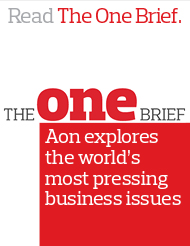Female participation, inclusion, and pay equity: what the latest data reveals
Key takeaways
- 28-30% of incumbents in Technology Engineering jobs across Asia Pacific are women
- New Zealand has the highest ratio of female incumbency in executive positions
- Promotion rates have increased (slightly) across some locations in Asia Pacific over the past year
- Legal jobs continue to be popular for women across the region
On International Women’s Day, the conversation around gender equity takes centre stage—but the real challenge is turning awareness into action. At Aon, we believe that data is one of the most powerful tools in fostering inclusion, supporting women’s participation in the workforce, and driving fairer pay outcomes. That’s why our data analytics team in Asia Pacific has been diving into one of the most comprehensive reward benchmarking databases in the world—the Aon Radford McLagan Compensation Database (RMCD). With insights from 9,000 companies across 125 countries, covering thousands of positions, RMCD provides the real-time data needed to track progress and highlight opportunities for greater diversity and pay fairness.
The rise of women in technology engineering
Encouragingly, our RMCD data shows that female participation in engineering roles is steadily increasing across 200+ companies in Singapore, Australia, and India. The most significant growth is seen at the entry level of the technology development engineering job family, indicating that more women are choosing this career path.
This trend spans a wide range of engineering disciplines, including software development, hardware design, electrical and mechanical engineering, and UI/UX design.

Women’s leadership in the legal sector
In the legal profession, female representation remains strong. Across 27 legal positions tracked in RMCD across key locations in Asia-Pacific, four markets report that 60% of roles were held by women in the past year.
When we focus specifically on the attorney and lawyer roles, the female participation rate remains consistent, reinforcing that law continues to be a career of choice for many women. While strong representation in legal positions is encouraging, it’s also essential to ensure that pay structures reflect equal opportunity and reward career progression fairly.
Shall we just do one graph – as they are both quite similar? Perhaps the first chart?


Executive leadership: the progress and the gap
Despite growing awareness of the need for more women in leadership, female representation in executive positions remains lower than what many organisations aspire to. However, our RMCD data reveals that New Zealand is leading the way in gender diversity at the executive level, with 45% of executive roles held by women. Other locations in APAC lag behind, with female representation in executive positions generally hovering in the 30% range or lower.
New Zealand has the highest ratio of women in executive roles

A closer look at one key executive role in our 2024 database —the chief financial officer (CFO)—highlights significant regional differences:
| Locations | CFO Female % |
| Singapore | 40% |
| Australia | 27% |
While some progress is evident, these figures suggest there’s still work to be done to ensure more women are given the opportunity to lead at the highest levels and receive equitable pay for their leadership contributions.
Promotions and pay equity: a step towards greater inclusion
Another key indicator of workplace inclusion is promotion rates. RMCD data shows that in some APAC markets, women were promoted into management roles at higher rates than their male counterparts in the past year:
% of Employees Promoted into Management Roles by Gender
| Locations | Female | Male |
| Australia | 17% | 15% |
| India | 23% | 16% |
| Japan | 20% | 18% |
| Singapore | 17% | 15% |
*including all promotions from professional levels to management levels and from junior management levels to senior management levels.
While these promotion trends signal progress, true equity also depends on ensuring that women receive comparable pay increases and are positioned for long-term career success.
Organisations that actively measure and address gender representation in hiring, promotion, and leadership roles, while also assessing pay parity, will be better positioned to attract and retain top talent while fostering inclusive workplaces.
By leveraging robust data like Aon’s RMCD, businesses can ensure that their policies and workplace cultures support a more diverse, equitable, and financially fair future for all employees.


